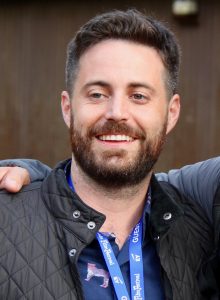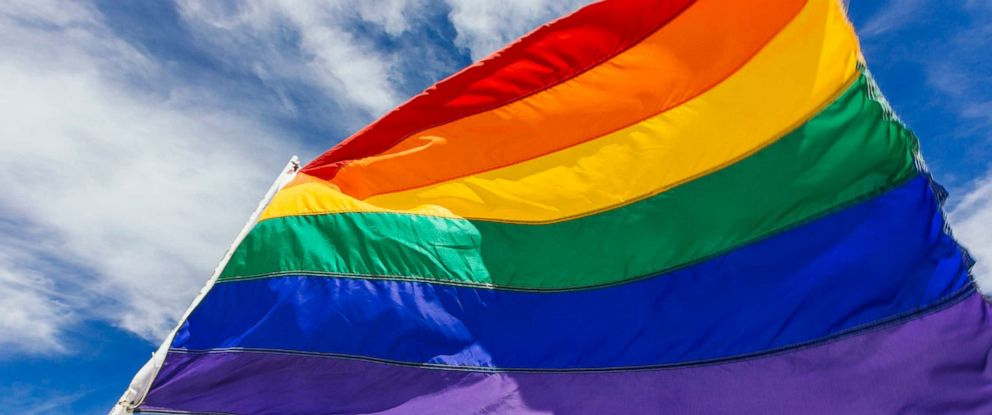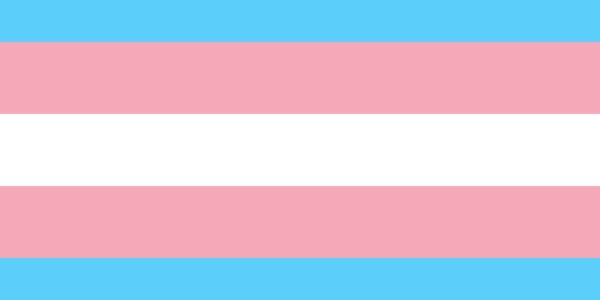LISTEN TO THIS ARTICLE:

Boy Erased
In the book, Boy Erased, author Garrard Conley reflects upon the year 2004, after he finished his freshman year of college. His parents coerced him to attend an ex-gay therapy program called Love in Action. Conley discusses how much he loved his first year of college, and how much he had always loved to read. He then tells of how, once starting the Love in Action Program, he became frightened of books. “My year of college had been so freeing, and reading so widely encouraged, that I’d almost forgotten what it felt like to suspect a book of literal demon possession.”
As his mother drove him to the program, she asked if he had enough “sins” to discuss in group therapy. “What my mother didn’t yet know about being gay in the South was that you never ran out of material. That being secretly gay your whole life, averting your eyes every time you saw a handsome man, praying on your knees every time a sexual thought entered your mind or every time you’d acted even remotely feminine. This gave you an embarrassment of sins for which you constantly felt the need to apologize, repent, beg forgiveness.”
People saw homosexuality as an illness that you could cure through treatments. They were horrific, such as giving electric shocks to a “patient” while showing them pictures of naked people of the same sex. The belief was that this would condition or “train” patients to prefer the opposite sex, thereby curing them.
Conversion Therapy horrors
Conley wanted his book to teach the public about the horrors of Ex-Gay or “Conversion” Therapy. There were conversations at the time, but deep-set societal fears of sexuality and non-gender conformity often made them seem more like a whisper.
Conversion Therapy uses several methods to try to change a person’s sexual orientation and/or gender identity. According to TheTrevorProject.com, conversion “therapists” may use a number of techniques that can include shaming and punishing with emotionally, or even physically, painful stimuli, with the goal of changing a person’s behavior and sexual preferences. According to a January 2018 article published by Williams Institute at University of California – Los Angeles (UCLA), more than 700,000 LGBTQ people have been subjected to conversion therapy, and the practice is expected to continue.
LGBTQ+ youth are now protected in now seventeen states. Unfortunately, it is estimated that outlawing Conversion Therapy may, in reality, only protect about one thousand adolescents in the year 2019. In fact, 33 states still allow it.
Sickeningly still around
Fortunately, sometimes whispers are heard. In 2016, the American Academy of Child and Adolescent Psychiatry (AACAP) finally denounced conversion therapy. “There is no evidence to support the application of any therapeutic intervention operating under the premise that a specific sexual orientation, gender identity, and/or gender expression is pathological… Such Conversion Therapies lack scientific credibility and clinical utility.”
Perhaps one of the most surprising things about Conley’s story is that by the year 2004, nearly twenty years had passed since homosexuality was no longer considered a disorder. Twenty years after, a supposed “therapy” continues to threaten innocent people.
A little progress
At the time Boy Erased came out in 2016, only three states had outlawed Conversion Therapy. It was not until 2019 that New York, Massachusetts, and, most recently, Maine, signed acts outlawing Conversion Therapy. “We need to continue working to make sure LGBTQ+ youth everywhere are protected from this form of torture. Today’s signing sends a clear message to young people that they are beautiful just the way they are,” said Amit Paley, CEO and Executive Director of The Trevor Project about the law in New York. LGBTQ+ youth are now protected in seventeen states. Unfortunately, outlawing Conversion Therapy may, in reality, only protect about one thousand adolescents in the year 2019. In fact, 33 states still allow it.
The change led to multiple protests by both the public and theorists. They saw homosexuality as part of the normal spectrum of human sexuality and believed it had no place in the DSM.
On September 1, 2018, Boy Erased, a biographical drama film based on Garrard Conley’s book made its world premier at the Telluride Film Festival. Conley is now using the promotional events of the movie to join with the Trevor Project. They want to shine an even brighter light on the horrific facts behind his book.
Outdated views
There is a charged history to this. It may have all started with the first edition of the Diagnostic and Statistical Manual of Mental Disorders (DSM-1, 1952). It called homosexuality a “sociopathic personality” trait. Sixteen years later, “sexual deviation” was the new wording in the DSM-2. The DSM viewed homosexuality as an illness that you could cure through treatments. They were horrific, such as giving electric shocks to a “patient” while showing them pictures of naked people of the same sex. The belief was that this would condition or “train” patients to prefer the opposite sex, thereby curing them.
A recent article, Out of DSM: Depathologizing Homosexuality, tells how all this changed. Gay activists got the attention of the American Psychiatric Association (APA), publisher of the DSM, through frequent protests. Eventually, that led to the APA’s decision to review the diagnosis. In 1973, after debating the issue amongst its board members, the APA voted (with a margin of a little over half) to change the wording to “sexual orientation disturbance.”
This created a kind of linguistic bridge between those who viewed homosexuality as a sickness and those who did not. The change led to multiple protests by both the public and theorists. They saw homosexuality as part of the normal spectrum of human sexuality. They believed it had no place in the DSM. Finally, in 1987, when the APA published the DSM-III, all references to homosexuality as a disorder disappeared. At the same time, DSM-III defined a new disorder called Gender Identity Disorder. DSM-V, the current edition has refined it to Gender Dysphoria.
Evolving thinking
By 1990, the World Health Organization (WHO) declared a renewed view. “It is not justifiable from a clinical, public health or research perspective for a diagnostic classification to be based on sexual orientation,” it said. Thereafter, the WHO removed homosexuality from its International Classification of Diseases. After that, debates about homosexuality shifted from medicine into moral and political realms.
In his 2014 article, When Homosexuality Came Out (of the DSM), British physician Vivek Datta, MD, MPH writes, “The removal of homosexuality from the psychiatric canon has undoubtedly facilitated the rights of those who identify as lesbian, gay, or bisexual. Adoption rights, same-sex marriage, the repeal of Don’t Ask Don’t Tell would never have occurred. Progress would have halted if people still saw homosexuality as the developmental end-point of deep psychopathology. In the same way, diagnoses of mental illness confer individuals with a sense of otherness. People can feel they are somehow different than other people, perhaps less important, less deserving, or of less worth.”
The “treatment” harmed
Today, the APA’s official position on conversion therapy is more than just a complete about-face from 1952. It emphasizes the potential harm such a “treatment” can inflict. “The potential risks of reparative [conversion] therapy are great, including depression, anxiety and self-destructive behavior, since therapist alignment with societal prejudices against homosexuality may reinforce self-hatred already experienced by the patient.”
Like Conley, most young people enter conversion therapies due to pressure from a perhaps well-meaning but misguided family member. A 2009 article published in the medical journal Pediatrics points out that adolescents who feel rejected by their family are 6 times more likely to have depression and 8 times more likely to attempt suicide.
Changes are certainly moving in a positive direction within the medical community and the DSM, APA, and WHO. But if debates about sexuality move away from psychopathology and more into the realms of morality and politics, protection of LGBTQ+ rights remains fragile at best.
If you know someone who needs help today, call the Trevor Lifeline at 866-488-7386.


 Learn
Learn Stories
Stories ID Symptom
ID Symptom News
News Find Help
Find Help
 Share
Share
 Share
Share
 Share
Share
 Share
Share


